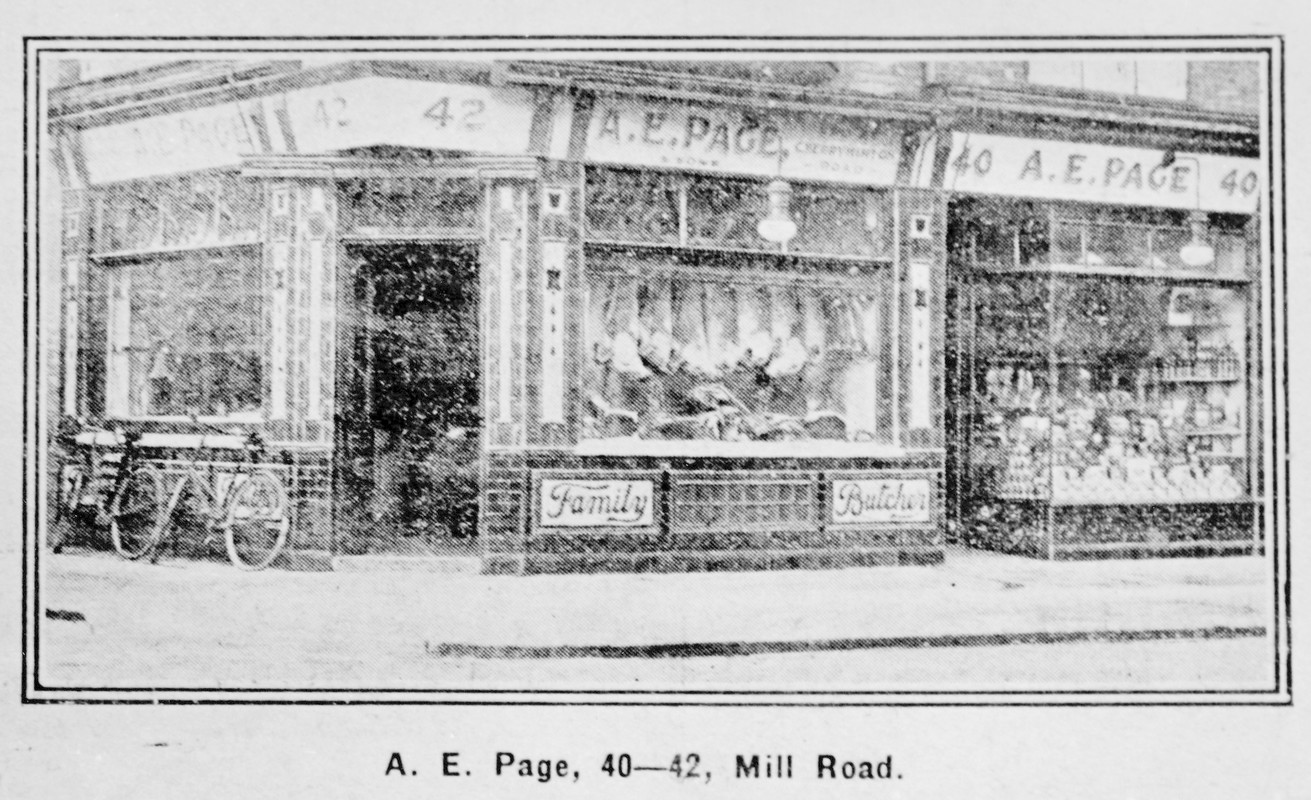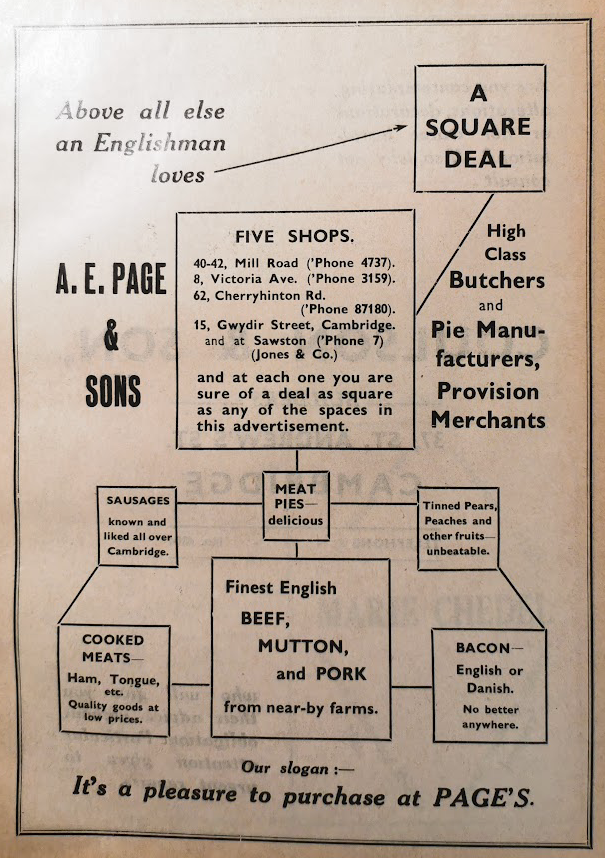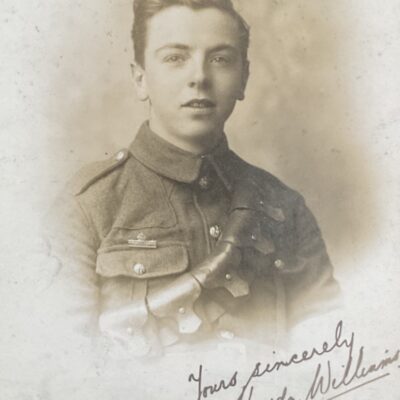Search by topic
- archaeology
- architecture
- bricklayer
- Building of Local Interest
- carpenter
- church
- crime
- dressmaker
- fire
- Great Eastern Railway
- listed building
- medieval
- oral history
- Public House
- Rattee & Kett
- Religious House
- Roman
- scholar
- school
- Then and Now
- tudor
- women
- work
- world war one
- world war two
Search by text
 Barney's Sign 2017 (Lucy Walker)
Barney's Sign 2017 (Lucy Walker)38, 40, 42 Mill Road, Mezereon Cottage
The Oldest Mill Road Building?
Mill Road old-timers will recognise this apparition: a ghostly relic of a former Mill Road institution: Barney’s Outfitters. Ah yes! ‒ but the bricks and mortar are much older than the shop frontage!
A sharp-eyed local historian recently spotted the tiny namestone under the building’s eaves: “MEZEREON COTTAGE“. The fabric of the building can be traced back to 1830, when it was a cottage, “new-built” located “on the right-hand side of Mill-road”, going out of town. This makes it eight years older than the Cambridge Union Workhouse, remnants of which still survive at Ditchburn Place. It is therefore possibly Mill Road’s oldest surviving building. The cottage is said originally to have had a “delightful garden“ with “thriving fruit trees and the best and most choice collection of flowers”. We know its occupant in 1830: Richard Briggs, gardener (Cambridge Chronicle), and from 1838 to 1851 its owner/occupier was George Rhymes, gardener (poor law records, census returns). The cottage is clearly marked just north of Covent Garden on a map of 1840 (Dewhurst & Nichols).
The name “Mezereon” first appears in a street directory for 1881, when the tenant was John Pierson, printer’s warehouseman. The name’s origin is obscure: the Daphne Mezereon is a poisonous variety of the flower Daphne ‒ was it growing in the garden? Compilers of Cambridge street directories were long fooled by the name, mis-spelling it as “Merzerion“ ,“Mergereon“ and “Mergerson“! By 1900 it had acquired a number: 38 Mill Road, and between it and Mortimer Road there was an unbroken row of 18 shops.
When Pierson died in 1913, his daughter occupied it until 1920. At that point it ceased to be a cottage and was transformed into a shop: first a shoe store (1921), next a wireless and gramophone depot (1928), after that a fruiterer from 1935 to 1960. It was then that Barney’s took it over (proprietor: Bernard Levitt), supplying cheap garments of all sorts, male and female, at rock-bottom prices. The store, which occupied Nos 38 and 40, and later took in the corner shop, No. 42, suffered a devastating fire in August 2000, putting an end to nearly 40 years of successful business. Entries on Facebook today show the fondness with which many people look back on the old store.
The only other building on the street that could possibly rival Mezereon Cottage for age is what is now Maurizio’s Italian Kitchen, at No. 44. Until the police raid in July 2008 it was The Locomotive public house, so named in 1847 after the arrival of the railway in 1845. But its life as a pub extends back before that date under the name The British Admiral, which certainly existed by 1838. Mezereon Cottage and The Locomotive can both be seen on a map of 1858 (R. R. Rowe).
Ian Bent, 2017
Census and Directory Information
1881
John Pierson, 55, printer’s warehouseman, b Cottenham
1891 Mezereon Cottage
John Pierson, printer
1901
John Pierson, 74, printers clerk University press, b Cottenham
1913 (38)
John Pierson
1923
(40 & 42) A. E. Page
1962
(38 & 40) Barneys, outfitters
(42) Fulbourn Manor Nurseries
(42a) Mrs Hunt
2000s:
(38 & 40) Subway
2019
(38 & 40) Vanderlyle Restaurant
Contribute
Do you have any information about the people or places in this article? If so, then please let us know using the Contact page or by emailing capturingcambridge@
License
This work is licensed under CC BY-NC-SA 4.0














